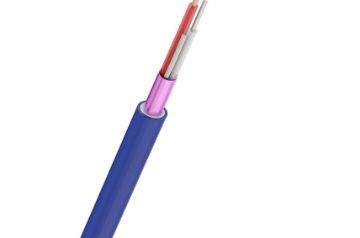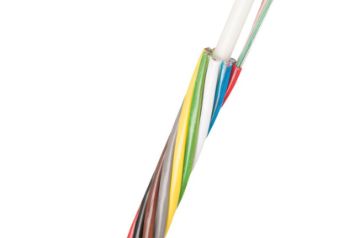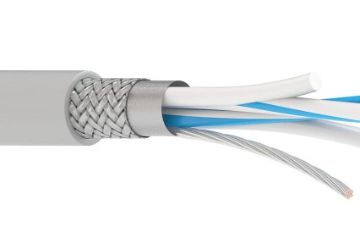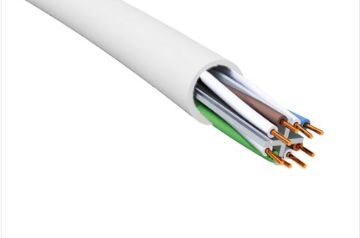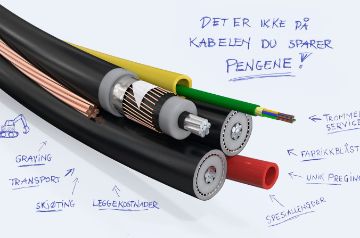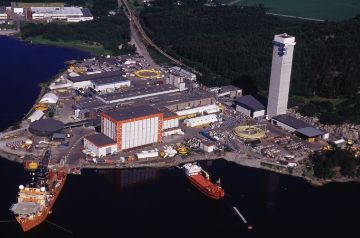- Products
- Segments
- Newsroom
- Tools and Resources
- Sustainability
- We are Nexans
- Search
- Contact us
- Compare
- Sign in
EPD (Environmental Product Declaration) and PEP
Nexans Nordics D&U
Content:
- What is an EPD
- What is the difference between a PEP and an EPD
- Standards, certification & verification
- How to use a PEP
- Where can I find EPDs?
- Digitalization of EPD data
What is an EPD?
An Environmental Product Declaration (EPD) is a document that provides transparent and roughly comparable information about the environmental impact of products or services.
EPDs are based on a life cycle assessment (LCA) and provide detailed information on the product's environmental performance, including resource consumption, emissions and potential impact on global warming, ozone depletion, acidification of water and soil, and human health.
What is the difference between PEP and EPD?
PEP, or Product Environmental Profile, is also an environmental declaration document and has the same function and recognition as an EPD from, for example, EPD Norway or EPD International. That's why we often call it EPD, as it has become a more familiar term.
PEP, or Product Environmental Profile, is also an environmental declaration document and has the same function and recognition as an EPD from, for example, EPD Norway or EPD International. This is why we often refer to it as an EPD, as it has become a more familiar term.

While the EPD is broad and covers all possible products (such as cement, insulation, asphalt, etc.), a PEP is more focused on electrical or electronic products. This means that the PEP addresses specific environmental aspects related to the product's use. This is also the reason why we at Nexans have chosen to use PEP instead of EPD.
The PEP specifies, among other things, how emissions from cables should be calculated during the user phase (resistance, temperature, etc.). When choosing cable dimensions, it is crucial to include the user phase.
A larger cross-section has a larger footprint in the production phase, but in the user phase it will be the opposite due to smaller losses in the cable. Cable dimensioning must take into account the entire life cycle, including the user phase.
Standards, certification, verification and publication
All Nexans PEPs are third-party verified, approved and published by PEP-EcoPassport.
In line with other published EPDs, they are:
- Based on the LCA standard ISO 14040 (how to measure) and ISO 14025 (how to communicate footprints).
- Produced according to EN 15804
All PEPs produced after mid-2022 and performed according to PCR ed4 with the latest update of EN 15804 (EN 15804+A2). A few PEPs published before this are according to PCR ed3 and in compliance with EN 15804+A1.
How do I use an EPD or PEP?
To use an EPD or PEP, you should read through the document to understand the environmental impact of the product throughout its life cycle. You can then use this information and assess it against other products or standards.
For example, EPDs can be used by:
- Manufacturers: to improve product development and demonstrate environmental responsibility
- Consumers: to make informed choices based on the environmental performance of products
- Construction industry: to achieve sustainable construction projects and fulfil environmental certification requirements
- Governments: to support public procurement and environmental legislation
It is important to note that the fact that a product has a PEP does not necessarily mean that the product is more environmentally friendly. The PEP only says something about HOW environmentally friendly it is.
What information can I get from Nexans Environmental Product Declarations (EPDs)?
Today, most people are interested in the product's climate impact, but we are also seeing a growing interest in resource, water and energy use. These key figures are easily accessible on the front of the PEP for the product's impact throughout its entire life cycle.
Otherwise, you can find important info about:
- Properties and description of the product and packaging.
- Functional unit, which is the reference unit in an LCA
- Various parameters such as "lifetime", "resistivity", "energy model for the country of use", etc. that can be used to calculate the product's environmental impact.
- The materials used in the product (percentage of plastics, metals and other materials)
- Information about the PEP issuer.
The PEP document contains a total of 26 environmental impact indicators, such as global warming, waste category, environmental impact and consumption of natural resources. These are also specified per phase:
- Production --> extraction of raw materials, design and manufacturing
- Distribution --> transport and marketing
- Installation --> use of the cables by installers
- Usage --> lifetime of the installed cable and use by the end customer
- Final treatment --> several possible choices: specific landfills, recovery or recycling
Note that the "installation" section is not part of the environmental impact analysis. This means that it is actually up to the installer to choose the right products based on the environmental declaration and use them in a sustainable way, especially considering the lifetime of the cable.
From product family to SKU and from Scope 1, 2 & 3 to phases A1, A2, A3 etc.
The EPD is based on a life cycle analysis (LCA) which is very extensive to produce. Therefore, it is produced for a "type cable" within a cable family and the calculations are then extrapolated to other cross-sectional areas or variants of the same cable family using mathematical formulae.
These formulae are provided at the end of the PEP, but it can be time-consuming to calculate this manually.
Therefore, Nexans has calculated CO2 emissions for all phases and SKUs and shared them digitally with the EFO according to the ISO 22057 standard. These figures can easily be extracted from both the PTD (Product Data Template) and the EFO database.
Greenhouse gas emissions or Global Warming Potential (GWP) for Phase A1-A3 cradle to gate is the most commonly used.
Where can I find the EPD?
Nexans EPDs (or PEPs) in PDF format at product family level can be found
- on our website under each product
- in the EFO database under each product
- published here under PEP-ECO PASSPORT
Nexans EPD data in digital form, at SKU level, can be found here:
- in the EFO database
- in the PDT (Product Data Template)
We also have the possibility to generate reports in Excel on sales and emissions.
Please contact us if this is of interest.
Digitalization of EPD data
As the first cable supplier, Nexans has mapped the content of the Environmental Product Declaration to the ISO 22057 standard and made the emissions data available digitally via EFO at SKU level.
"This is a big step in the right direction as it will significantly simplify the use of the data. Making the data easily accessible and quick to update will be crucial for making conscious choices and achieving all our climate goals," says Hanna Wird, Marketing Manager at Nexans Nordics.
READ MORE: See more about the digital environmental data at EFO here
DISCLAIMER: At Nexans, we acknowledge that sustainability and environmental protection can be complex and constantly evolving. We cannot claim to have all the knowledge, but we strive to stay updated, avoid greenwashing, continuously improve, and endeavor to do the right things based on the knowledge available to us today.
E3 model
Our websites
Select your country to find our products and solutions
-
Africa
- Africa
- Ghana
- Ivory Coast
- Morocco
- North West Africa
- Americas
- Asia
- Europe
- Oceania

